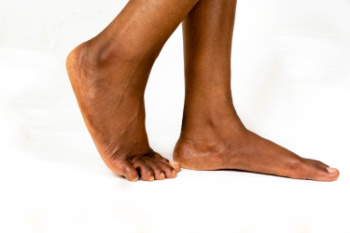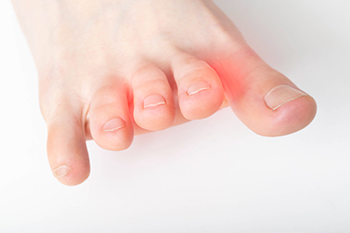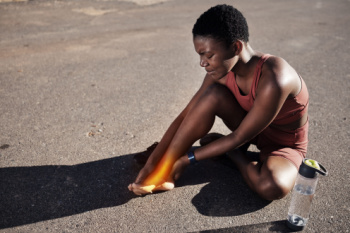Connect With Us
Blog

Flat feet occur when the arch on the inside of the foot flattens, causing the entire sole to touch the ground. This can lead to foot and ankle pain, tiredness after standing, and changes in walking. Strengthening the muscles in the feet through specific exercises can help support the arch and improve stability. These exercises focus on lifting the arch, spreading the toes, and flexing the feet up and down to build strength in the small muscles that support balance and motion. Strengthening muscles higher up the leg, like those around the hips, also helps improve alignment and reduces pressure on the arches. Over time, these exercises can help the feet feel stronger and more comfortable when standing or walking. A podiatrist can assess your feet, recommend proper exercises, and manage supportive care. If you have flat feet that are causing discomfort it is suggested that you make an appointment with a podiatrist for a diagnosis and treatment.
Flatfoot is a condition many people suffer from. If you have flat feet, contact one of our podiatrists from Advanced Foot and Ankle Centers, Inc.. Our doctors will treat your foot and ankle needs.
What Are Flat Feet?
Flatfoot is a condition in which the arch of the foot is depressed and the sole of the foot is almost completely in contact with the ground. About 20-30% of the population generally has flat feet because their arches never formed during growth.
Conditions & Problems:
Having flat feet makes it difficult to run or walk because of the stress placed on the ankles.
Alignment – The general alignment of your legs can be disrupted, because the ankles move inward which can cause major discomfort.
Knees – If you have complications with your knees, flat feet can be a contributor to arthritis in that area.
Symptoms
- Pain around the heel or arch area
- Trouble standing on the tip toe
- Swelling around the inside of the ankle
- Flat look to one or both feet
- Having your shoes feel uneven when worn
Treatment
If you are experiencing pain and stress on the foot you may weaken the posterior tibial tendon, which runs around the inside of the ankle.
If you have any questions, please feel free to contact our offices located in Clovis and Madera, CA . We offer the newest diagnostic and treatment technologies for all your foot care needs.

Freiberg’s disease is an uncommon condition that affects the long bones in the ball of the foot, most often the one beneath the second toe. It occurs when the bone loses some of its normal blood supply, leading to pain, stiffness, and swelling during walking or activity. Many people first notice discomfort that feels like pressure under the toe, especially when wearing thinner shoes or standing for long periods. As the condition progresses, the joint may become less flexible, and the pain can begin to interfere with daily movement. Because early symptoms can resemble other forefoot problems, it is easy to overlook or misidentify. A podiatrist can take a closer look through examination and imaging to confirm the diagnosis and recommend treatments that reduce stress on the joint and protect long-term function. If you have persistent pain under the second toe that is not improving, it is suggested that you see a podiatrist for proper evaluation.
Some foot conditions may require additional professional care. If you have any concerns, contact one of our podiatrists of Advanced Foot and Ankle Centers, Inc.. Our doctors can provide the care you need to keep you pain-free and on your feet.
Rare Foot Conditions
The majority of foot conditions are common and can be treated by a podiatrist. Standard diagnostic procedures are generally used to identify specific conditions and treatment can be rendered. A podiatrist also treats rare foot conditions which can be difficult to diagnose and may need extra attention and care.
There are many rare foot conditions that can affect children. Some of these can include:
- Freiberg’s disease
- Kohler’s disease
- Maffucci syndrome
Freiberg’s disease - This can be seen as a deterioration and flattening of a metatarsal bone that exists in the ball of the foot. It typically affects pre-teen and teenage girls, but can affect anyone at any age. Symptoms that can accompany this can be swelling, stiffness, and the patient may limp.
Kohler’s disease - This often targets the bone in the arch of the foot and affects younger boys. It can lead to an interruption of the blood supply which ultimately can lead to bone deterioration. The patient may limp or experience tenderness, swelling, and redness.
Maffucci syndrome - This affects the long bones in a child’s foot leading to the development of abnormal bone lesions. They are benign growths and typically develop in early childhood and the bones may be susceptible to breaking.
A podiatrist can properly diagnose and treat all types of rare foot conditions. If your child is affected by any of these symptoms or conditions, please don’t hesitate to call our office so the correct treatment method can begin.
If you have any questions, please feel free to contact our offices located in Clovis and Madera, CA . We offer the newest diagnostic and treatment technologies for all your foot care needs.

Foot pain can arise from many causes, and its location often reveals the problem. Pain in the heel may signal plantar fasciitis or a heel spur, while pain in the ball of the foot may result from metatarsalgia or a neuroma. Aching arches can stem from flat feet or overuse, and pain along the outer edge might indicate a stress fracture or tendon irritation. Toe pain can develop from bunions, hammertoes, or ingrown nails. Each type of pain may feel sharp, burning, throbbing, or dull, depending on the underlying condition. Wearing improper shoes, standing for long hours, or overtraining can make symptoms worse. If you are experiencing ongoing or severe foot pain that affects your mobility, it is suggested that you see a podiatrist for an accurate diagnosis, and a treatment plan tailored to your needs.
Foot Pain
Foot pain can be extremely painful and debilitating. If you have a foot pain, consult with one of our podiatrists from Advanced Foot and Ankle Centers, Inc.. Our doctors will assess your condition and provide you with quality foot and ankle treatment.
Causes
Foot pain is a very broad condition that could be caused by one or more ailments. The most common include:
- Bunions
- Hammertoes
- Plantar Fasciitis
- Bone Spurs
- Corns
- Tarsal Tunnel Syndrome
- Ingrown Toenails
- Arthritis (such as Gout, Rheumatoid, and Osteoarthritis)
- Flat Feet
- Injury (from stress fractures, broken toe, foot, ankle, Achilles tendon ruptures, and sprains)
- And more
Diagnosis
To figure out the cause of foot pain, podiatrists utilize several different methods. This can range from simple visual inspections and sensation tests to X-rays and MRI scans. Prior medical history, family medical history, and any recent physical traumatic events will all be taken into consideration for a proper diagnosis.
Treatment
Treatment depends upon the cause of the foot pain. Whether it is resting, staying off the foot, or having surgery; podiatrists have a number of treatment options available for foot pain.
If you have any questions, please feel free to contact our offices located in Clovis and Madera, CA . We offer the newest diagnostic and treatment technologies for all your foot care needs.

